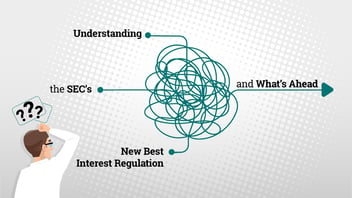
What Insurance Agents Need to Know About the CARES Act and Paycheck Protection Program

On April 24, 2020, President Trump signed into law a $484 billion bill that will add more than $320 billion for the Paycheck Protection Program (PPP), created by the Coronavirus Aid, Relief and Economic Security Act, or the CARES Act.
The CARES Act, originally signed into law in late March 2020, ran out of money quickly because of high demand. The original $2.3 trillion rescue package was designed to provide economic relief to workers, businesses, government agencies, hospitals and American families who may face financial hardship resulting from the coronavirus pandemic. The $484 billion bill passed April 24 replenishes the PPP with $320 billion and also has about $75 billion for hospitals, $25 billion for coronavirus testing and $60 billion for the Small Business Administration’s Economic Injury Disaster Loan program.
There are a number of provisions within the CARES Act that you should be familiar with not only as an agent so you can advise your clients, but also as a small-business owner. There are provisions within the CARES Act, most notably the Paycheck Protection Program, designed to help small businesses survive this difficult time.
What is the Paycheck Protection Program?
The PPP provides billions in forgivable loans to help small businesses retain their workforce during the coronavirus crisis. Loans are primarily to help pay payroll costs (including benefits), but can also be used to pay interest on mortgages, rent, and utilities. On June 5, 2020, President Donald Trump signed the Paycheck Protection Program Flexibility Act of 2020, which extends the loan forgiveness period beyond the initial eight-week covered period to 24 weeks. The Paycheck Protection Program Flexibility Act also reduces the share of funding that must be directed toward payroll costs to 60% and pushes back a June 30 deadline to rehire laid-off workers to Dec. 31.
Who qualifies for the Paycheck Protection Program?
Small businesses that have been in operation since Feb. 15, 2020, and have fewer than 500 employees are eligible. This includes sole proprietorships, independent contractors, and self-employed persons.
How and when can I apply for the Paycheck Protection Program?
Funds are available on a first-come, first-served basis. Small-businesses and sole proprietorships could apply as of April 3, 2020. Independent contractors and self-employed individuals can apply April 10, 2020.
You can apply through any existing SBA 7(a) lender or through any federally insured bank, credit union and farm credit system that is participating. Other regulated lenders may be able to make these loans once they are approved and enrolled in the program. A list of approved lenders can be found at www.SBA.gov.
Will Paycheck Protection Program loans be forgiven?
Under the CARES Act, loans were to be fully forgiven if they were used for payroll costs, interest on mortgages, rent and utilities if 75% of the forgiven amount is used for payroll. But the Paycheck Protection Program Flexibility Act signed into law June 5 reduces the share of funding that must be directed toward payroll costs to 60% — thus, allowing 40% of the loan to be directed toward nonpayroll costs.
The lender will verify the number of employees, pay rates and will require payment records. You will be required to certify that the loan was used in accordance with the guidelines. So it is recommended that you open a separate account to manage these funds. Any loan amounts that are not forgiven will be treated as a regular loan.
Other CARES Act provisions
There are a number of provisions within the CARES Act that you and your clients should be aware of because of their impact on taxes, qualified plans, mortgage payments and student loans. Here is a quick summary of some of the more notable ones.
Recovery Rebates
Any individual with a valid Social Security number and within certain income thresholds (see chart below) will receive a one-time payment of $1,200 ($2,400 if married). In addition, eligible families with children will receive payments of $500 per child. Social Security recipients who are not typically required to file a tax return do not need to take action and will receive their payment directly to their bank account.
| Filing Status | ||
|---|---|---|
| Rebate Amount | Single | Married Couple |
| Entire Amount | Less than $75,000 | Less than $150,000 |
| Reduced Amount | $75,000 – $99,000 | $150,000 – $198,000 |
| Rebate Amount | Above $99,000 | Above $198,000 |
Retirement Plan Provisions
- The bill waives the 10% under age 59½ early withdrawal penalty for coronavirus-related distributions of up to $100,000 during 2020. A “coronavirus-related distribution,” as defined under the CARES Act, is generally for those individuals who have been diagnosed with COVID-19, whose spouse or dependent has been diagnosed with the disease or anyone who has been adversely affected financially by the coronavirus.
- Additionally, the income tax on these distributions can be paid over a three-year period, or an individual may recontribute the funds back into an eligible retirement plan within three years.
- From now through Sept. 23, 2020, employer retirement plans may be amended to allow retirement plan participants to borrow 100% of their vested account balance up to $100,000, and the due date for loan repayments will be extended for one year.
- The deadline for making 2019 IRA contributions was extended to July 15, 2020.
- And the bill suspends the required minimum distribution (RMD) rules for IRAs and most defined contribution plans for the 2020 calendar year. This temporary waiver provides relief to those who would be required to take withdrawals during an economic slowdown caused by the pandemic.
Charitable giving
- Taxpayers can receive an above-the-line tax deduction of up to $300 for charitable contributions whether they itemize their deductions or not.
- For those individuals who itemize, the 50% of adjusted gross income limit on the deduction for charitable contributions has been suspended for 2020. This allows some taxpayers who make large charitable donations to deduct more of what they give.
Unemployment assistance
- Unemployment assistance has been expanded to include those workers who are unable to work due to the coronavirus and traditionally would not be eligible for unemployment benefits. These workers include self-employed, independent contractors, gig workers and those with limited work history.
- The bill provides an additional 13 weeks of unemployment benefits through Dec. 31, 2020, and an additional $600 per week of assistance from the federal government for a period of four months.
Mortgage loan relief
- Homeowners who have a federally backed mortgage loan and have experienced financial hardship related to the COVID-19 emergency may request forbearance for up to 180 days. During this period, no fees, penalties or additional interest shall accrue on the borrower’s account.
- Additionally, there is a foreclosure moratorium on all federally backed mortgages for a 60-day period beginning on March 18, 2020.
Student loan forgiveness
- Payments on student loans held by the Department of Education may be suspended until Sept. 30, 2020. Furthermore, no additional interest shall accrue on any suspended loan payments.
This material is for informational purposes only and should not be regarded as tax advice. Clients should consult with an attorney or tax advisor for information regarding a particular situation. Retirement plan participants should refer to their plan document or contact their plan administrator.


Understanding the SEC's New Best Interest...
Advisors and brokers making investment recommendations will soon face new federal disclosure and compliance requirements to act in their clients’...

NAILBA Recognizes Bill Kauffman for...
Bill Kauffman, Vice President of Financial Solutions at Senior Market Sales® (SMS), has been selected as a recipient of the 2020 NAILBA Independent...